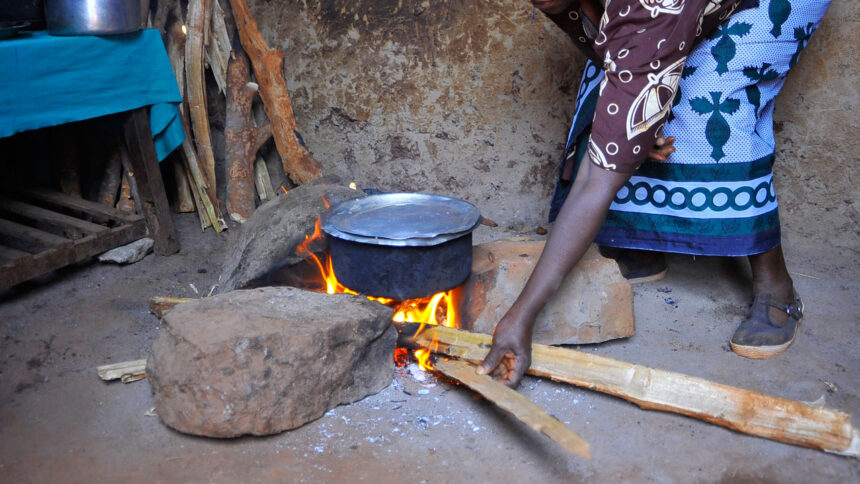At the break of dawn each day, Ifeoluwa Dada recites her prayers and ventures into the forest of Omu-Aran community in Nigeria’s Kwara State in search of firewood.
She returns home before 7:00a.m. to cook food, using the firewood she gathered, for her husband and three children.
“I use firewood to cook my meals because it’s very fast,” Dada said. “Whenever I have enough money and time, I use a charcoal pot, which I fan to flame. So I usually opt for firewood, which I use my mouth to fan occasionally during the cooking.”
As Dada explained, she learned to cook using firewood from her mother, although she struggled with the effort. Her skin had become wizened as her forehead had become furrowed from too much exposure to the flames, making her appear older.
Firewood Cooking?
Also known as fuelwood, firewood is the oldest cooking fuel derived from logs and tree branches. The Food and Agriculture Organization of the United Nations (FAO) defines it as “wood in its natural state, obtained from tree trunks and branches, used as fuel for various purposes such as cooking, heating, or power generation.”
While firewood has been replaced by gas and other sources in much of the West, this traditional source of energy remains prevalent in the continent of Africa.
In sub-Saharan Africa, biomass energy is the primary source of cooking and heating fuel for roughly 2.5 billion people, with a staggering 90% of the population dependent on wood fires for their daily domestic energy needs.
Wood fuel is the main energy source for about 70% of households in the region, highlighting Africa’s heavy reliance on this traditional energy source, as stated in a research paper.
This steady rise in the use of firewood poses high peril to many women, who are often responsible for household cooking and the general food industry. In Nigeria, it was reported that 98, 000 women die annually from the use of firewood and charcoal.
How much risk does wood smoke pose?
A team of researchers conducted a study on the effect of prolonged exposure to wood fuel. Their research indicated that individuals who used solid fuels like coal and wood for a long time had a higher risk of developing an eye disease as opposed to those who used “clean” fuels, such as electricity or gas.
The diseases with increased risks included disorders of the sclera, cornea, iris, and ciliary body (35 per cent higher risk), conjunctiva disorders (32 per cent higher risk), and cataracts (17 per cent higher risk). However, the risk was minimized by several percentage points for those who switched from solid fuels to clean fuels during the follow-up period.
Researchers from three institutions (the University of Oxford’s Nuffield Department of Population Health, the Academy of Medical Science, and Peking University), conducted a similar study on firewood cooking. The report stated that cooking with coal and wood can lead to eye damage and even blindness. Tiny particles released in the fumes can penetrate the eyes and cause physical harm to the interior tissues, resulting in potential long-term damage or vision loss, the report stated.
Sadly, in recent years, the cost of “clean energy” has risen beyond the means of women like Dada, who continue to source for small logs to prepare the family dinner notwithstanding its perils.
“I know cooking with firewood is bad, but what other options are affordable and free? I must feed my family,” Dada said.





